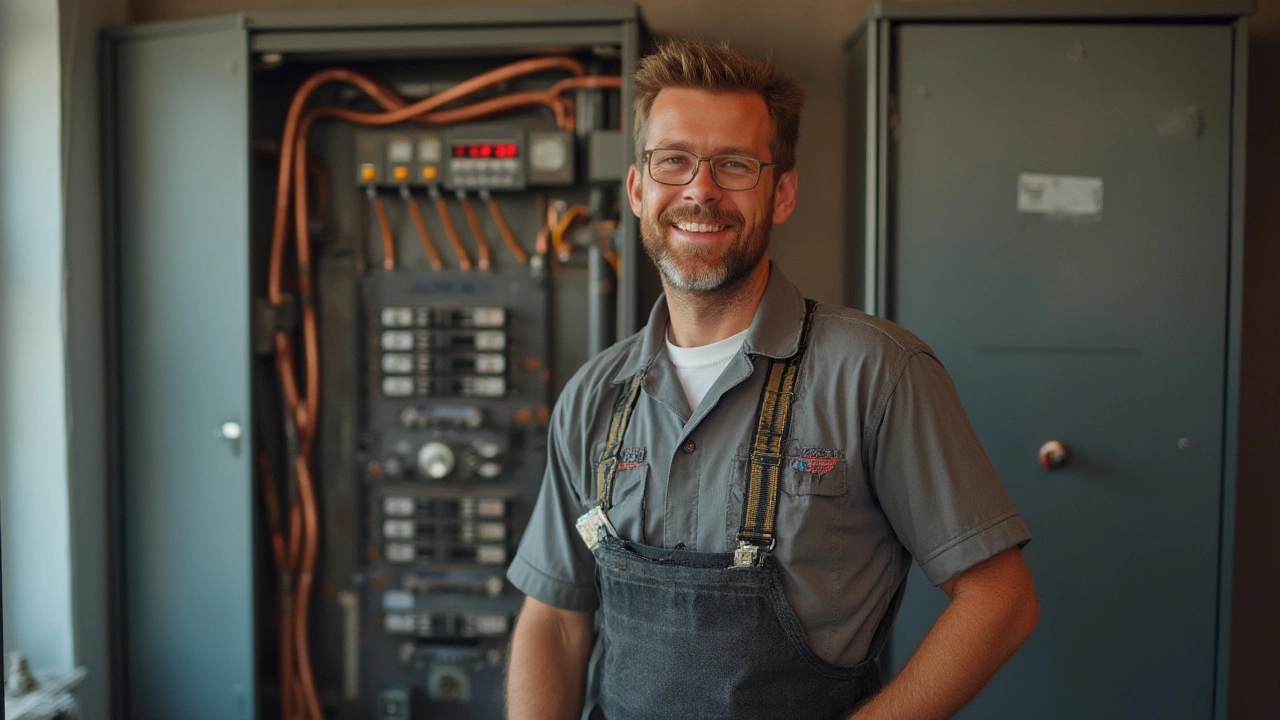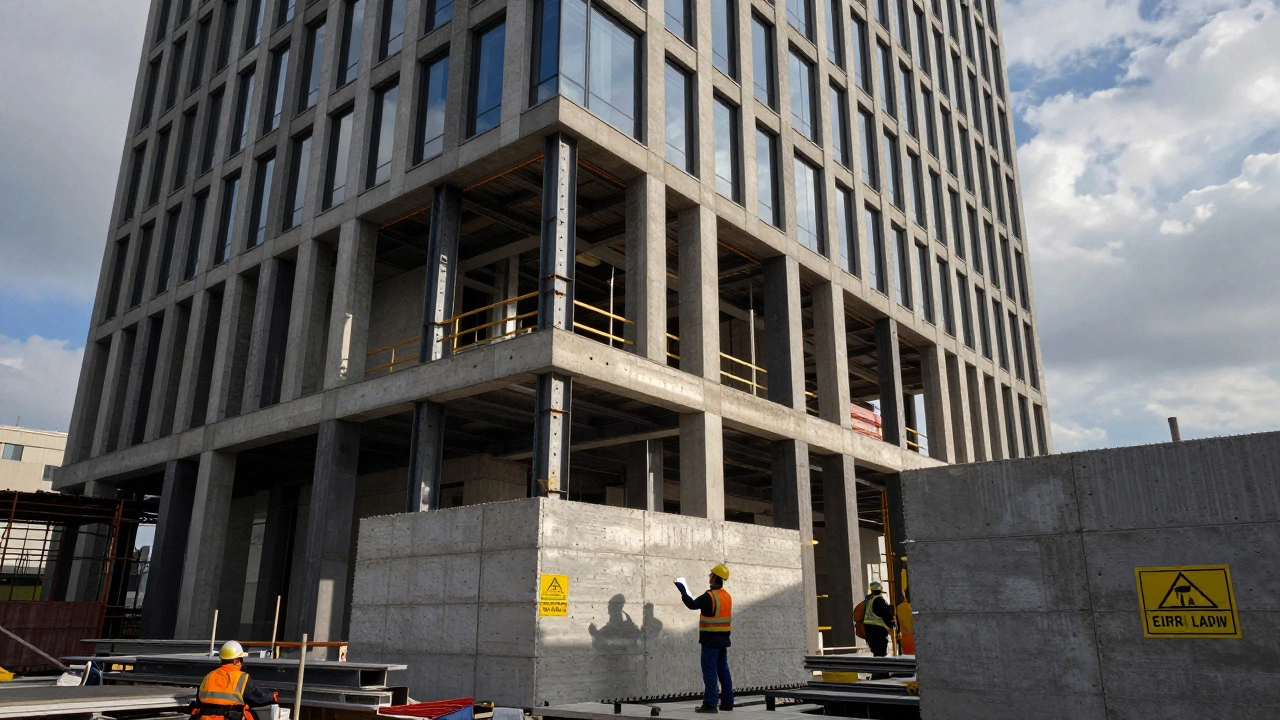Depending who you ask, the idea of tradies making more than doctors might sound like a wild myth. Spend ten minutes on a construction site in Melbourne, though, and someone will probably set you straight. There’s a reason you’ll see million-dollar homes going up with tradies who seem to know exactly where the money flows—and it’s not just in their smoko jokes.
The Money Trail: Which Construction Trades Dominate the Pay Charts?
People often ask which trade hauls in the biggest pay packets, and the answer’s not as cut and dry as you might think. It swings a lot depending on the economic climate, region, and what sort of projects are booming. But when you crunch the numbers in Australia, the fields that consistently top the charts are electrical, plumbing, elevator mechanics, and construction managers (for those with the right ticket).
If you’re chasing pure hourly rates, elevator and lift mechanics almost always score the top slot. The 2024 Clarius Skills Index showed elevator and lift technicians pocketing between $50 and $60 an hour on average, and that’s without overtime or site bonuses. Not far behind are licensed electricians and plumbers, especially those who run their own show instead of being on wages. Working for yourself can see take-home pay double, but it comes with the risks of running a business.
Now, here’s a jaw-dropper: seasoned crane operators managing major building sites can break $150,000 per year. For some particularly hairy lifts, or work on major tower builds, some craneies are paid even more. But don’t expect to stroll into one of these gigs without years of experience and a pocketful of tickets.
| Trade | Average Hourly Rate (AUD) | Annual Earnings Estimate |
|---|---|---|
| Elevator/Lift Technician | $50 - $60 | $120,000 - $180,000 |
| Crane Operator | $45 - $60 | $110,000 - $150,000+ |
| Electrician (licensed) | $40 - $55 | $100,000 - $140,000 |
| Plumber (licensed) | $40 - $52 | $95,000 - $130,000 |
| Construction Manager | $60+ | $120,000 - $200,000 |
Specialist trades like boilermakers or pipefitters working on union gigs—especially large commercial or infrastructure projects—often gap ahead of smaller residential trades. Big difference comes from overtime, remote locations, and hazard pay. Some FIFO (fly-in-fly-out) mining tradies on huge projects pull six figures within months, but that lifestyle isn’t for everyone.
Why Do These Trades Pay So Much?
It's not random luck or some secret handshake. When you look at the top-earning trades, three things stand out: skill shortages, risk level, and the laws around who can do what. If there aren’t enough people trained for electrical work or elevator repairs, then pay rates creep up—sometimes fast. And let's be real, not many people are lining up to dangle in a crane cab 30 floors up or troubleshoot a faulty lift in a shopping centre at 1 a.m.
Danger matters. WorkSafe stats from 2023 put electrical trades near the top for workplace injuries—right behind scaffolders and heavy machine operators. That risk needs a pay bump, otherwise nobody sensible would show up. Insurance alone eats into the earnings, especially for sole traders and small businesses.
Then you have licensing and training requirements. In Victoria, getting a full electrical license takes four years as an apprentice plus passing tough TAFE and Energy Safe Victoria assessments. Elevator mechanics face another level: their training is specific to machines most people will never touch. The more hoops you jump through, the fewer people available—which jacks up the price for everyone left standing.
Let’s not skip the business side. A lot of tradies go out on their own, but that means they need to sort out GST, business insurance, gear, even their own workers. The higher the responsibility, the higher the costs—and the pay reflects that. My mate who runs his own electrical contracting business jokes he spends half his days talking to customers and ordering gear, and the other half crawling through roofs. But his bank statements show it’s a decent trade-off.

What Skills and Training Do Top-Earning Trades Need?
If you think any old hammer swinger can rake in $150k a year, think again. These jobs go to people with grit, years of training, and spotless paperwork. For something like elevator mechanic or construction management, you’re looking at:
- Formal apprenticeships: usually 3-5 years, combining on-the-job work with block release to TAFE for the technical study.
- Licensing exams: electricians in Victoria, for example, must pass the Licensed Electrician’s Assessment run by Energy Safe Victoria, which is notoriously tough.
- Special certifications: crane operators need to pass High Risk Work Licenses and sometimes site inductions like the white card or even specific tower crane certifications for CBD jobs.
- Additional training: some jobs need Working at Heights, Confined Spaces, or First Aid certs, or even security clearance if you’re working rail, defence, or sensitive government projects.
Technical skill aside, there’s a whole social side to earning well. It’s about networking and building a good reputation. If your phone gets passed to construction managers as ‘the guy who sorts problems on short notice and doesn’t cut corners,’ you’ll never be short of work. I still remember one site manager, old school tradie, told me: “Son, half the job is just showing up when you say you will, clean and sober.” Sounds simple, but you'd be surprised how rare that is.
Don’t skip the paperwork, either. Good record-keeping, regular upskilling, and keeping your license current are all musts for the highest paying gigs. Plenty of talented tradies never break the pay barrier because they get tangled in red tape or let their tickets lapse.
Tips for Boosting Your Income in Construction Trades
If you’re serious about landing one of the highest paid trade gigs, you’ll want a plan. There’s no magic fast-track, but a few steps will set you up better than a ramshackle toolbag or flying solo with a dodgy ABN. Here’s what works best for real tradies, not just TikTok influencers bragging about their utes.
- Specialize Early: Find a niche with high demand—solar installations, hospital fit-outs, elevator servicing, industrial electrical, or FIFO work. High demand, short supply = big paydays.
- Never Stop Learning: Upskill as much as possible. Grab those extra tickets: Working at Heights, EWP (elevated work platforms), even PLC programming for electricals. Each new skill means more jobs you can say ‘yes’ to, and clients will often pay a premium for all-in-one tradespeople.
- Get Licensing and Insurance Sorted: Skip shortcuts. Clients and big contractors only hire people who tick all the boxes. When Amara finished her plumbing apprenticeship, we spent several nights sorting out contractors’ insurance paperwork—but now she chooses her jobs and charges accordingly.
- Work the Networks: Word of mouth is gold. Stay friendly with suppliers, other tradies, and site managers. Your reputation is a kind of capital, and top earners tend to get the best referrals.
- Go Remote or FIFO: Consider jobs in remote locations, mines, or big projects interstate. Harder lifestyle, but the pay jumps can be wild—sometimes double regular city rates if you can cope with weeks away.
- Start a Business—But Prep First: If you’re confident and organised, going out on your own can quickly boost your earnings. But do your homework: running a good business is as important as swinging a hammer right.
Here’s one last trick a lot of people overlook: use downtime for extra ticketed work. Electricians often cross-train in data cabling or security systems, plumbers add roofing to their skills, and crane operators stack up extra machine tickets. When jobs in one area drop off, you stay working, stay earning, and keep cash flowing.
In the end, highest paid trade in construction isn’t a fixed target. The field shifts with the market, the projects, and how much you’re willing to sweat for it. There’s no one-size-fits-all path to a fat pay packet, but the high rollers in this game are the ones who hustle, learn, and stick it out through the tough days. So, next time you see a shiny new ute parked at the construction depot, remember: behind that flash is a serious mix of training, risk, and more than a few long days on site.





